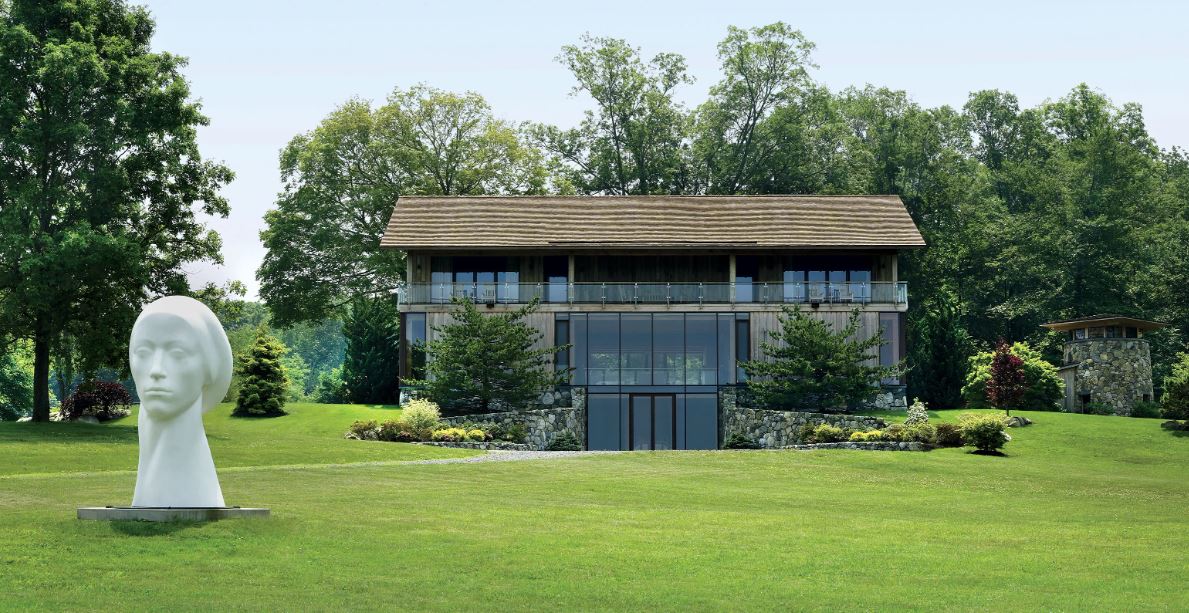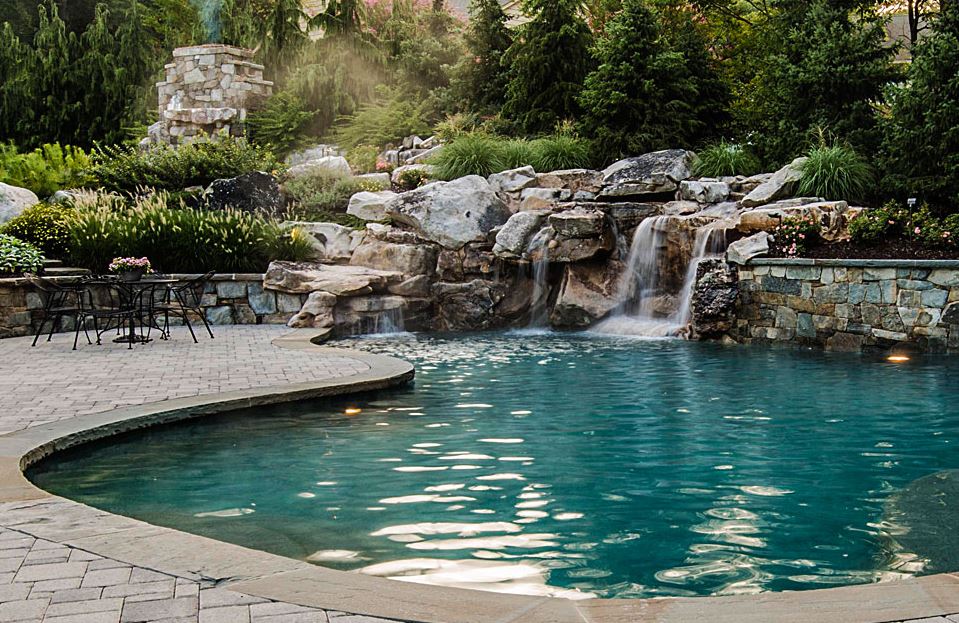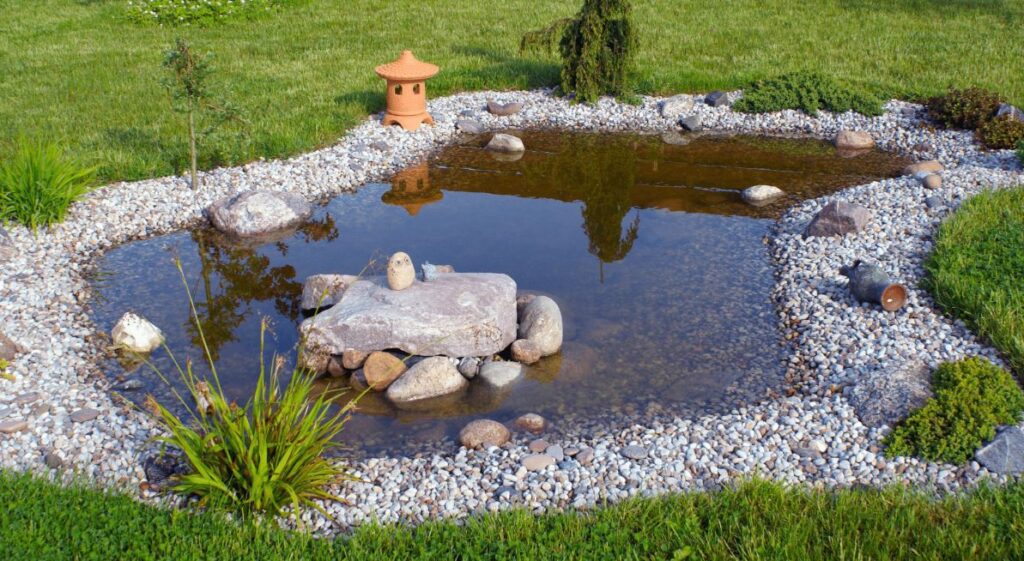Landscape design goes beyond arranging plants and pathways; it creates a harmonious and visually appealing outdoor space.
Have you considered incorporating art and sculpture into your landscape design?
From functional pieces to decorative elements, art and sculpture can enhance the aesthetics of any outdoor space.
In this article, we will explore the different types of art and sculpture used in landscape design, how they can improve the overall look, and the considerations to consider when choosing and incorporating them into various landscapes.
Art and sculpture can transform your outdoor environment, whether you have an urban, rural, coastal, or desert landscape.
Let's explore the beauty and creativity of integrating art and sculpture into landscape design.
What Is Landscape Design?
Landscape design is a multidisciplinary field that involves the arrangement and modification of outdoor spaces to achieve a particular aesthetic or functional goal. It encompasses various design elements to create harmonious and visually appealing environments that blend with nature.
By combining elements such as plants, hardscape features, water bodies, and lighting techniques, landscape designers craft outdoor spaces that reflect their clients' unique tastes and preferences.
The creative process of landscape design goes beyond simply arranging elements in a space; it involves thoughtful consideration of how each component interacts with the surrounding environment. Through careful planning and attention to detail, designers can transform ordinary landscapes into extraordinary works of art that inspire and rejuvenate those who experience them.
Why Should Art and Sculpture Be Integrated into Landscape Design?
Integrating art and sculpture into landscape design adds unique artistic features and sculptural forms that enhance outdoor spaces' overall aesthetics and visual appeal. By incorporating artistic elements, designers can achieve a creative expression that harmonises with the environment.
Such integration transforms ordinary landscapes into captivating outdoor art galleries and creates a dynamic interplay between nature and human-made creations. Art and sculpture serve as focal points, guiding the viewer's gaze and fostering a sense of exploration and wonder within the surroundings. These artistic interventions contribute to the preservation and restoration of ecosystems by incorporating sustainable materials and promoting biodiversity. Integrating art into landscape design enriches the outdoor experience, inviting individuals to engage with their surroundings more meaningfully and visually stimulatingly.
What Are the Different Types of Art and Sculpture Used in Landscape Design?
Art and sculpture in landscape design encompass a variety of types, including functional, decorative, interactive, and natural forms. Each type brings creative design innovation and uses natural materials to enhance the outdoor environment.
Functional art pieces, such as benches or fountains, serve both aesthetic and practical purposes. They offer visitors a place to rest or a focal point in the landscape.
Conversely, decorative sculptures add visual interest and artistic flair to the surroundings, often reflecting the unique style or theme of the outdoor space.
Interactive artworks engage viewers by encouraging exploration and participation, creating a dynamic experience within the landscape.
Natural art forms, like rock arrangements or tree sculptures, harmonise with the environment, blurring the line between art and nature.
Functional Art and Sculpture
Functional art and sculpture in landscape design serve a dual purpose of artistic expression and practical functionality. These pieces often exhibit creative design innovations that integrate seamlessly into the outdoor environment.
They not only add visual interest to the landscape but also contribute to the overall ambiance of the space. By incorporating elements such as water features, seating areas, or lighting, these artworks enhance the usability and enjoyment of outdoor spaces. Functional art and sculpture can serve as focal points or accents, guiding the viewer's eye through the landscape and creating a sense of cohesion and harmony. Their innovative approaches blur the lines between art and utility, inviting interaction and engagement with the surrounding natural environment.
Decorative Art and Sculpture
Decorative art and sculpture are employed in landscape design to add aesthetic value and artistic balance to outdoor spaces. These pieces often feature intricate artistic elements contributing to the overall visual impact.
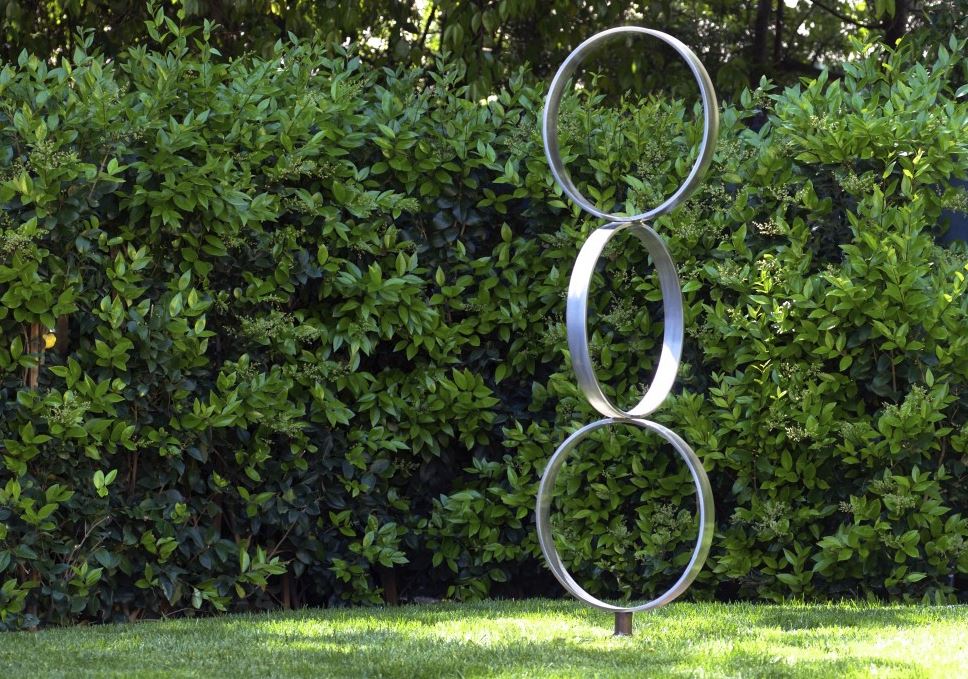
The strategic placement of sculptures and art pieces can draw the eye, create focal points, and establish a sense of flow and continuity in the landscape. Sculptures can be used to evoke a specific mood or theme, adding a unique character to the outdoor environment.
Incorporating decorative art into landscaping helps to blur the lines between the natural and human-made elements, harmonising the surroundings in a way that is visually compelling and engaging for those who interact with the space.
Interactive Art and Sculpture
Interactive art and sculpture engage viewers by creating dynamic spatial relationships and encouraging artistic collaboration within the outdoor environment. These pieces often invite participation and reflect the creators' artistic vision.
Engaging with art in outdoor spaces enriches the visual experience and opens up opportunities for viewers to delve deeper into the creative process. People can explore different perspectives and interpretations by interacting with sculptures and art installations, forging a connection with the landscape around them. This interactive element transforms passive observers into active participants, sparking conversations and fostering community through shared artistic encounters.
Natural Art and Sculpture
Natural art and sculpture draw inspiration from nature's organic forms and elements, incorporating nature-inspired design principles to create harmonious and sustainable outdoor artworks. These pieces blend seamlessly with the landscape, reflecting the beauty of natural surroundings.
By utilising natural materials like wood, stone, and plants, artists and designers infuse their creations with a sense of tranquillity and connection to the environment. Using sustainable practices further enhances the eco-friendly aspect of these installations, promoting a balanced relationship between art and nature.
Whether it's a driftwood sculpture mimicking the flow of a river or a botanical-inspired mural adorning a garden wall, each piece contributes to the overall aesthetic appeal of the outdoor space while respecting and celebrating the inherent beauty of the natural world.
How Can Art and Sculpture Enhance the Aesthetics of a Landscape Design?
Art and sculpture play a pivotal role in enhancing the aesthetics of landscape design by adding visual interest, creating focal points, and contributing to the overall visual impact of outdoor spaces. These artistic elements are essential for achieving creative landscaping and elevating the design's aesthetic appeal.
Incorporating art pieces and sculptures into outdoor environments can transform a mundane space into a dynamic and visually stimulating landscape. The strategically placed sculptures can guide the viewer's gaze through the garden, leading to visual experiences. Art installations can evoke emotions, spark contemplation, and add a touch of sophistication to the outdoor area. By integrating art seamlessly with the natural elements of the landscape, designers can establish a harmonious balance that captivates viewers and enhances their connection with the surroundings.
Adding Visual Interest
Art and sculpture add visual interest to landscape design by captivating viewers with their artistic presentation and enhancing the overall landscape. These elements contribute to enhancing outdoor spaces and creating visually appealing focal points.
They serve as distinctive features that beautify the surroundings, evoke emotions, and spark curiosity. Sculptures strategically placed in gardens or parks can draw the eye, leading observers on a visual journey through the landscape. Art installations bring a sense of creativity and uniqueness to outdoor settings, making them more dynamic and engaging. Their presence reinforces the connection between nature and human creativity, offering a multi-dimensional experience that enriches the outdoor environment.
Creating Focal Points
Art and sculpture serve as focal points in landscape design, drawing attention to specific areas and contributing to the artistic balance of outdoor spaces. These elements are characterised by their intricate artistic details that enrich the landscape.
They play a crucial role in creating a harmonious blend between nature and artistic expression. By strategically placing sculptures or art installations in a garden or outdoor area, designers can guide viewers' gaze towards key focal points, such as a striking sculpture amidst a serene garden setting. Incorporating art in landscaping design offers a unique way to infuse creativity and personality into the environment, transforming ordinary spaces into visually captivating masterpieces.
Adding Colour and Texture
Art and sculpture add colour and texture to landscape design, enriching the visual landscape with vibrant hues and tactile elements. These features enhance the overall aesthetic appeal of outdoor spaces and contribute to the diversity of landscape features.
By incorporating diverse colours and textures, art and sculpture create focal points that draw the eye and evoke different emotions within the outdoor environment. Using bold, bright colours can bring energy and vitality to a garden or park, while textured sculptures offer a tactile experience that engages the senses of touch and sight. These artistic elements seamlessly blend with natural surroundings through strategic placement and design, adding depth and visual interest to the overall landscape design.
Bringing in Nature
Art and sculpture bring elements of nature into landscape design, harmonising with the natural surroundings and enhancing the design's overall harmony. By integrating natural elements, designers create a sense of design harmony that resonates with the outdoor environment.
This connection between art, sculpture, and nature in landscape design goes beyond mere aesthetics; it establishes a profound bond between the man-made and the organic. The deliberate inclusion of natural materials and forms beautifies the space and encourages a deeper appreciation and respect for the environment. Through this seamless integration of artistic elements, outdoor spaces can transcend mere functionality, becoming immersive and transformative experiences for those who interact with them.
What Are the Considerations When Choosing Art and Sculpture for Landscape Design?
When selecting art and sculpture for landscape design, several crucial considerations include scale and proportion, material durability, maintenance requirements, and installation feasibility. These factors ensure the art pieces harmonise with the surrounding environment.
Choosing the right scale is vital to prevent the art from overpowering or getting lost in the landscape.
Selecting materials that can withstand outdoor elements is important, ensuring longevity and weather resistance.
Considering maintenance needs is crucial to determine the care and upkeep required to preserve the artwork's integrity over time.
Assessing installation feasibility helps seamlessly integrate the art into the design without disrupting the overall layout and functionality of the landscape.
Scale and Proportion
The scale and proportion of art and sculpture play a vital role in landscape design, determining how these elements interact with the spatial design of outdoor environments. Proper consideration of scale and proportion ensures harmonising artistic elements within the landscape.
When selecting art and sculpture for a landscape, it's essential to assess how these pieces will fit within the existing environment and contribute to the overall aesthetics. By carefully matching the scale of the artistic elements to the surrounding landscape features, one can create a sense of unity and balance. Conversely, proportion guides the relationships between different elements, ensuring that no single piece overwhelms the space or appears out of place. Achieving harmony through appropriate scaling and proportioning of art and sculpture empowers designers to evoke specific emotions and enhance the overall ambiance of the outdoor space.
Material and Durability
Art and sculpture's choice of material and durability is critical in landscape design to ensure longevity and structural integrity. Selecting suitable materials and durable structural elements is essential for maintaining the aesthetic appeal of outdoor artworks.
When considering art and sculpture for outdoor spaces, it is important to consider how the chosen materials will interact with the surrounding environment over time. Factors like exposure to sunlight, moisture, wind, and temperature variations can all impact the durability of the artwork.
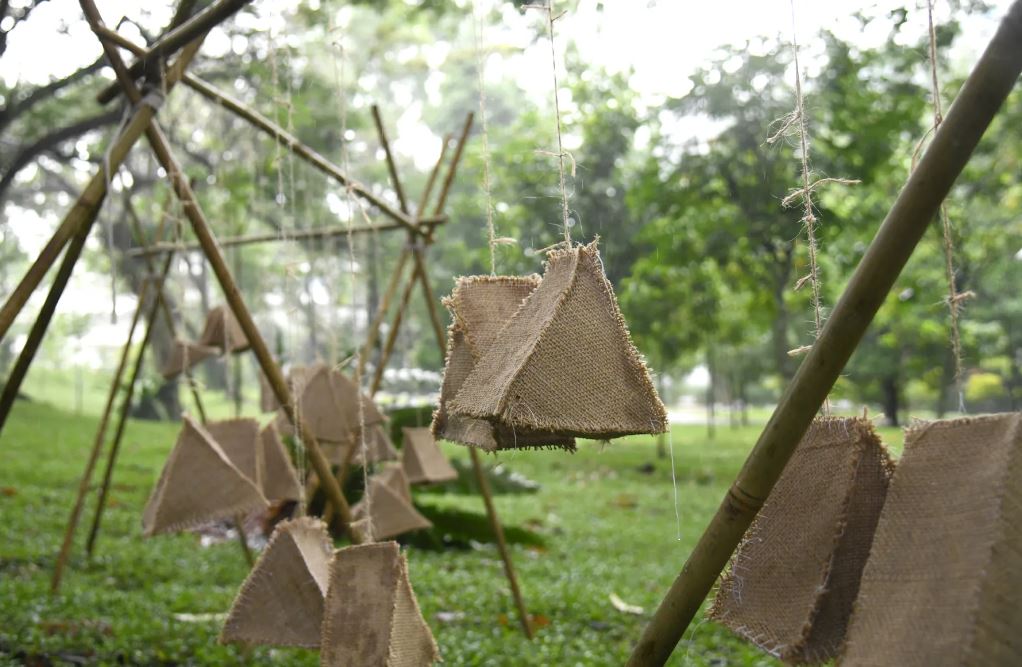
Opting for robust materials such as stainless steel, bronze, concrete, or natural stone can help ensure the pieces retain their visual impact and structural stability despite changing weather conditions. By prioritising durability in material selection, landscape designers can create timeless outdoor spaces that harmoniously blend art with nature.
Maintenance and Installation
Maintenance and installation are crucial when incorporating art and sculpture into landscape design. Proper planning for maintenance requirements and seamless installation processes are vital for preserving the artistic integrity of outdoor artworks and ensuring their longevity.
Collaborating with artists to understand their vision and requirements is essential in ensuring that the installation aligns with the intended aesthetic and environmental impact.
Factors such as weather resistance, material durability, and structural stability must be evaluated to select artworks that can withstand outdoor conditions.
Engaging with maintenance experts can help create proactive care plans to address cleaning, repairs, and preservation strategies tailored to the specific needs of the artworks and the surrounding landscape environment.
Budget
Budget plays a crucial role in determining the selection of art and sculpture for landscape design projects. Balancing artistic vision with budget constraints is essential to uphold design principles while achieving artistic balance within the allocated financial resources.
Considering the financial aspects when selecting art and sculpture allows landscape designers to make strategic decisions that enhance the outdoor space's aesthetic appeal and ensure the overall project stays within budget.
By carefully weighing cost implications against design goals, designers can create harmonious outdoor environments that reflect creativity and originality without compromising practicality. This approach encourages thoughtful consideration of various artwork options and their associated costs, fostering a cohesive and visually pleasing landscape that aligns with artistic vision and financial limitations.
How Can Art and Sculpture Be Incorporated into Different Types of Landscapes?
Art and sculpture can be seamlessly integrated into various types of landscapes, including urban, rural, coastal, and desert environments. Each landscape type offers unique opportunities for the installation of art pieces that resonate with the specific characteristics of the surroundings.
In urban settings, art installations can serve as focal points in bustling city centres, adding a touch of creativity and cultural significance to public spaces.
In rural landscapes, sculptures can blend harmoniously with nature, creating a tranquil and contemplative atmosphere for visitors.
Along coastal areas, art pieces can mirror the dynamic beauty of the ocean, becoming iconic landmarks that celebrate the connection between land and sea.
In desert environments, sculptures can provide artistic relief against the backdrop of vast, open spaces, offering a contrast that sparks imagination and appreciation for the stark beauty of the arid landscape.
Urban Landscapes
In urban landscapes, art and sculpture play a vital role in enhancing public spaces and contributing to the urban design aesthetic. Site-specific art installations can transform urban environments and create cultural significance within the cityscape.
These art forms not only beautify the concrete jungles but also serve as a medium for storytelling and expressing a place's unique identity.
When artists embed their sculptures within the fabric of a city, they infuse life and meaning into what could have been mundane structures.
The juxtaposition of contemporary art against historical architecture often sparks thought-provoking conversations and adds depth to the urban experience.
These carefully curated art installations invite the public to engage with their surroundings in a new and profound way, fostering a deeper connection between people and their urban environment.
Rural Landscapes
Rural landscapes offer a canvas for art and sculpture that celebrates the natural beauty of the surroundings. Incorporating natural materials and reflecting the artistic vision of designers, these outdoor artworks blend harmoniously with the rural environment.
Using natural materials, such as wood, stone, and plants, ensures that the artwork resonates with its surroundings and adds to the sustainability factor.
Artists often draw inspiration from the organic shapes and textures in rural landscapes, infusing their creations with a sense of belonging and connection to the land.
Integrating art and sculpture in these settings enhances the countryside's aesthetic appeal and creates opportunities for visitors to engage with the environment in a unique and meaningful way.
Coastal Landscapes
Coastal landscapes provide a unique backdrop for art and sculpture installations harmonising with natural coastal elements. These artistic pieces establish design harmony and spatial relationships that complement the coastal environment's scenic beauty.
The integration of art and sculpture into coastal landscapes elevates visitors' aesthetic experience, offering a blend of creativity and nature that captivates the senses. These installations add visual interest and contribute to the coastal region's storytelling, reflecting its history, culture, and natural features.
By strategically placing sculptures and artwork within the landscape, designers can create focal points that draw attention to specific areas, encouraging exploration and appreciation of the coastal surroundings.
Desert Landscapes
In desert landscapes, art and sculpture contribute to environmental aesthetics by introducing creative design elements that resonate with the desert's unique features. These outdoor artworks blend seamlessly with the desert environment, creating artistic transformations within the arid landscapes.
Integrating art and sculpture in desert settings creates a harmonious balance between nature and human creativity. The strategic placement of sculptures among the sand dunes or rocky terrain enhances the area's visual appeal, offering visitors a multi-sensory experience. As the sunlight interacts with these artworks, casting striking shadows and reflections, they become not just objects but part of the dynamic landscape itself. This fusion of art and nature adds beauty to the desert and sparks conversations about conservation, culture, and the importance of preserving these awe-inspiring environments.
